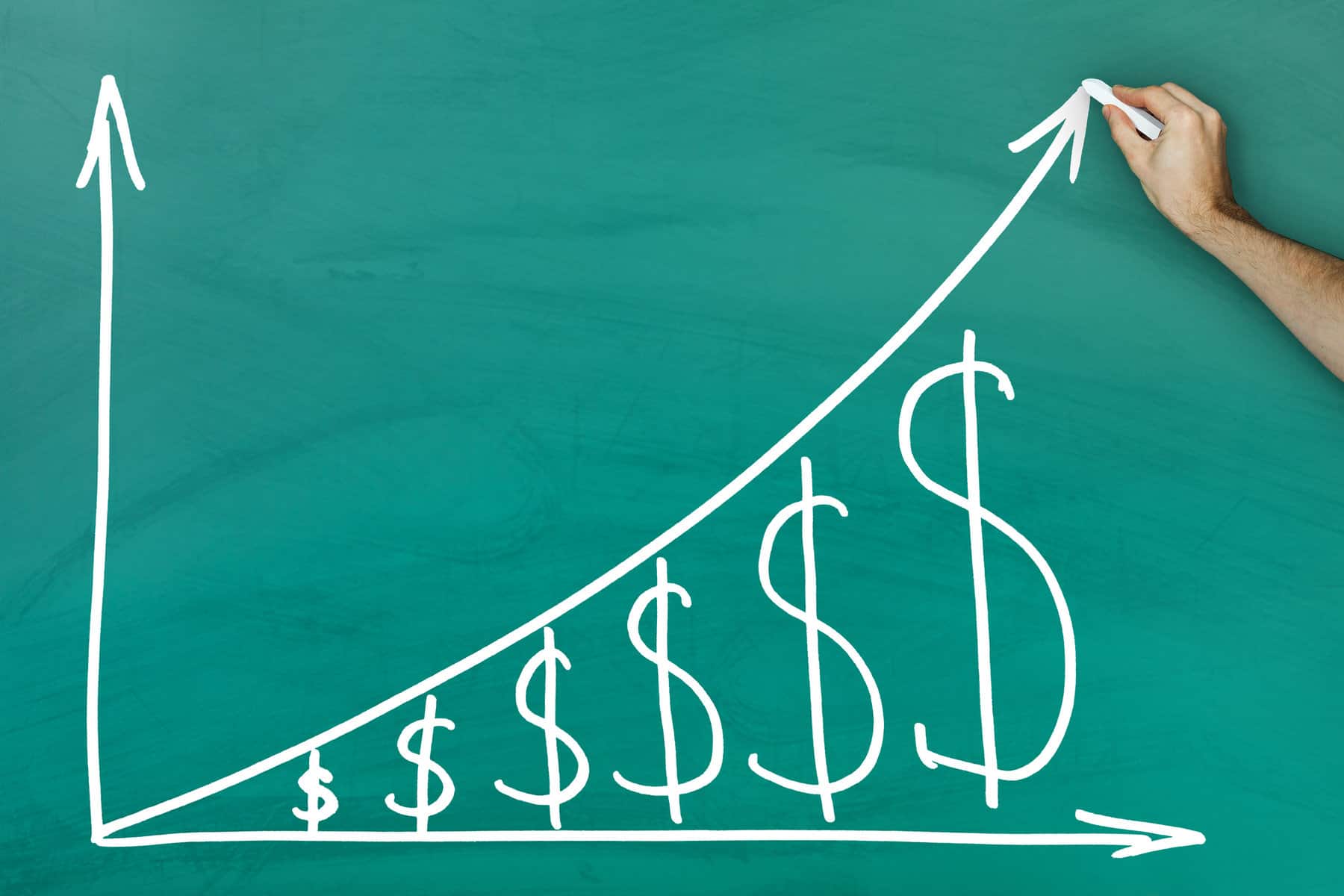
Every working Canadian should save a portion of their paycheques for their future. You can build a passive income from dividend stocks. Let’s say your first target is to earn $100 every month. You don’t need a whole lot of savings to start investing. In fact, with as little as $3,000, you can eventually earn $100 a month.
If you invest $3,000 today and earn a portfolio yield of 6% from dividends, you would earn $180 in passive income in the first year. You can invest this extra $180 into your dividend portfolio. In the following year, if you put in $3,000 again, you would have a total of $3,180 to invest and earn $190.80 (up $10.80) in passive income from dividends, assuming a 6% portfolio yield is maintained.
About $191 does not seem like a lot, which is why personal finance experts recommend saving 20% of your take-home income. According to Dundas Life, the Labour Force Survey indicated that the average annual salary in 2022 was $59,300 in Canada. This equates to a take-home income of $46,997.52 after paying for income taxes, if you live in Ontario. Savings of 20% is $9,399.50 annually, or about $783.29 per month.
How to turn $3,000 into $100 every month
Your regular savings and the magic of compound interest is what will get you to your first target of $100 a month. If you continue to invest $3,000 a year mixed in with your dividends for a 6% dividend yield, you’ll get annual dividends of $573 per year in three years and $1,255.60 annually (or almost $105 per month) in six years.
Eventually, your dividend portfolio can get to a point of self-funding. Continuing our scenario, in 12 years, the $50,610 portfolio would be earning $3,036.60 per year in passive income, surpassing your $3,000 annual contribution!
Where can you invest for a safe dividend yield of 6% today?
The Big Six Canadian bank stocks are popular for passive dividend income. Right now, Canadian Imperial Bank of Commerce (TSX:CM) offers an absolutely attractive dividend yield of 6.1%. At $55.63 per share at writing, analysts estimate the dividend stock trades at a discount of about 15%. The long-term normal valuation of the stock suggests it trades at an even steeper discount of roughly 21%.
CIBC’s trailing 12-month payout ratio is about 61%. However, its estimated adjusted earnings suggests a payout ratio of about 49% this fiscal year. The bank’s payout ratio tends to be below 50% in most years. Its payout ratio is typically higher than normal when there are macroeconomic headwinds. This year, Canada and the United States — two core areas CIBC operates in — are expected to experience a recession.
Based on the bank’s history of execution and paying a strong track record of dividends, CIBC appears to be a plausible investment for juicy dividends. For reference, its 10-year dividend-growth rate is 6.1%. It goes to show CIBC stock is a good candidate to help you achieve your long-term passive income target — whatever it may be.
A word of caution
A 6% yield is quite juicy already. Yet there are higher cash distribution yields out there. Investors should be careful not to chase high yields. Instead, focus on healthy dividend growth, as growth is what drives dividend growth and total returns in the long run. Also, remember to diversify your portfolio to spread your risk around.
The post Need Passive Income? Turn $3,000 Into $100 Every Month appeared first on The Motley Fool Canada.
Should You Invest $1,000 In CIBC?
Before you consider CIBC, you’ll want to hear this.
Our market-beating analyst team just revealed what they believe are the 5 best stocks for investors to buy in April 2023… and CIBC wasn’t on the list.
The online investing service they’ve run for nearly a decade, Motley Fool Stock Advisor Canada, is beating the TSX by 21 percentage points. And right now, they think there are 5 stocks that are better buys.
See the 5 Stocks
* Returns as of 4/18/23
(function() {
function setButtonColorDefaults(param, property, defaultValue) {
if( !param || !param.includes(‘#’)) {
var button = document.getElementsByClassName(“pitch-snippet”)[0].getElementsByClassName(“pitch-button”)[0];
button.style[property] = defaultValue;
}
}
setButtonColorDefaults(“#5FA85D”, ‘background’, ‘#5FA85D’);
setButtonColorDefaults(“#43A24A”, ‘border-color’, ‘#43A24A’);
setButtonColorDefaults(“#fff”, ‘color’, ‘#fff’);
})()
More reading
- This Bank Stock Could Turn 182 Shares Into $13,490 in 2023
- TFSA Total Returns: 2 Top Canadian Dividend Stocks to Buy on a Pullback
- Better Dividend Buy: Bank of Montreal or CIBC Stock?
- These Canadian Dividend Stocks Are a Great Way to Create Passive Income
- 3 Quick Ways to Save Cash and Invest More
Fool contributor Kay Ng has no position in any of the stocks mentioned. The Motley Fool has no position in any of the stocks mentioned. The Motley Fool has a disclosure policy.
